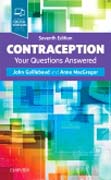
This seventh edition has been completely revised and updated, incorporating relevant WHO and national guidance documents: therefore imparting best evidence-based practice for all methods. Combined oral contraceptives (COCs) Based on the long-established evidence that 7 days of routinely not-taking pills in each cycle is too long for maintained ovarian suppression - and this necessarily leads to too little margin for errors in pill-taking - the authors recommend that providers switch to a new norm for all users of either: Tricycling, the 84/4 regimen, or totally continuous use (365/365), OR, for women who remain keen to see monthly pill-bleeds (which are completely unnecessary for health), one of the regimens (24/4 or 21/4) that shorten the contraception-non-taking time to 4 days New methods, and their importance or otherwise: Intrauterine system: Jaydess® Subcutaneous, self-injectable alternative to Depo-Provera: Sayana® Press 24/4 combined hormonal contraceptives: Zoely®, Eloine® Diaphragm: Caya® Updates Quick starting and bridging (the Proving not Pregnant Protocol) Emergency contraception (EC), how advice differs for ulipristal acetate EC Drug metabolism (implications with norethisterone) and interactions (eg affecting lamotrigine) INDICE: 1. Introduction 2. Aspects of human fertility and fertility awareness: natural birth control 3. Male methods of contraception 4. Vaginal methods of contraception 5. The combined oral contraceptive - selection and eligibility 6. The combined oral contraceptive - follow-up arrangements and new routes of administration 7. The progestogen-only pill 8. Injectables and implants 9. Intrauterine devices and systems 10. Emergency (postcoital) contraception 11. Contraception for the young, the not quite so young - and in future Further reading Websites Appendices
- ISBN: 978-0-7020-7000-6
- Editorial: Elsevier
- Encuadernacion: Rústica
- Páginas: 424
- Fecha Publicación: 31/08/2017
- Nº Volúmenes: 1
- Idioma: Inglés
